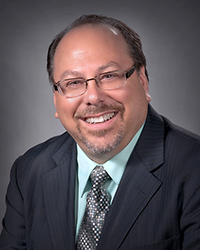Unbreakable Bond - Adam Cooper FBCA
© Adam Cooper
2009 BioImages Best of Show
This photo showcasing the Palliative Care floor and end of life care at North Shore-LIJ Health System taken by Adam Cooper captured the last days a son shared with his father. The photo was used in the hospital's annual report.
"This photo was taken with a Nikon D3s, 24-70 f2.8 lens, tripod mounted. Since this is a very emotional photo, I wanted to let the natural room light help tell the story. There were no additional photographic lights used except for a reflector to the right. Without any strobes, and shooting with just a reflector, we can move in and out of delicate situations without too much of a disturbing factor for the patient and the family. Post-production in Photoshop played a role in creating a mood within this image. At first I tried it in full black and white. I felt it was too stark. Then I decided to take the saturation down about two thirds. This adds to the feeling that the life is almost completed, and how the son feels about the father in the photo."
Read more about this photographer
 Adam Cooper discovered the medical photography program at RIT when he was in high school. "I knew that I wanted a career in photography and loved biology and microscopes," he said. "The field was a natural for me. RIT provided the best possible training not only in scientific and medical photography, but in the basics of the technology and processes needed to be successful."
Adam Cooper discovered the medical photography program at RIT when he was in high school. "I knew that I wanted a career in photography and loved biology and microscopes," he said. "The field was a natural for me. RIT provided the best possible training not only in scientific and medical photography, but in the basics of the technology and processes needed to be successful."
Cooper says he has been developing his style and specialty in environmental portraits and images for annual report and public relations work since 1986, when he began working for North Shore-LIJ Health System.
Below, Cooper shares insight into his specialty of medical photography and advice for other photographers interested in the field.
Describe your typical workday.
I've said this many times: I have not had the same day twice in my almost 27 year career. I've been with the North Shore-LIJ Health System since 1986. When I started it was one hospital, North Shore University Hospital. As the climate of medicine changed, the hospital connected with other hospitals in the region and now consists of 16 hospitals with 45,000 employees. Nine out of ten days, I'm out shooting. My office is centrally located, but I may travel as far as 40 miles each way to a location for a photo assignment. I'm also responsible for the photography team within my department (the North Shore-LIJ Studios). My responsibility is to mentor the staff and to coordinate the scheduling of all photos. I also manage our multiple (about 15 as of today) freelance and per-diem staff when the in-house staff is not available for assignments. It's a challenge to balance management, and photographic production, but it's exciting.
What is the most used computer-editing tool in your workflow?
I use Adobe Photoshop and Adobe Bridge.
What elements are important to you when you judge or critique your work or the work of other professional photographers?
I believe in light. The proper use of light to help tell the story in the photo is paramount to creating an exceptional photograph. If a photo is needed to showcase technology, then strobes and multiple lights may be required. If the photo is designed to bring out emotion, natural light or soft light may do the trick. When I see other photographers work, I judge their work on the use of light and how it helps tell the proper story in the photo.
Do you have any advice for photographers interested in a career in biomedical/life sciences photography?
Being involved in the BCA, I get calls frequently asking how to become a medical photographer. Medical and scientific photography is extremely multifaceted. There are people who photograph with a microscope or do macro photography exclusively. There are people who do dermatology photography exclusively, and like myself, there are people who do a wide variety of photography, including public relations, patient photography, architecture, glassware, macro, micro, and the list goes on.
I tell people interested in a career in medical photography that the degree that RIT provides is not only a medical/scientific skill set. The students that come out of RIT have a detailed knowledge of photography and can adapt to any assignment that comes their way.
If school is not an option, and if the person has photographic knowledge, another way to learn is to volunteer in a medical photography department. Many institutions have a need for volunteers and when the work increases, the volunteer has an advantage that they are already trained in that shop. If a job opens up, they may consider hiring that person.
Another way to learn about medical and scientific photography is to join and get involved with the BCA. The BioCommunications Association has a wide variety of opportunities for sharing of knowledge and networking with many people in the field. Our annual meeting is great way to meet the members in person, and learn a great deal about the latest trends in the field.
